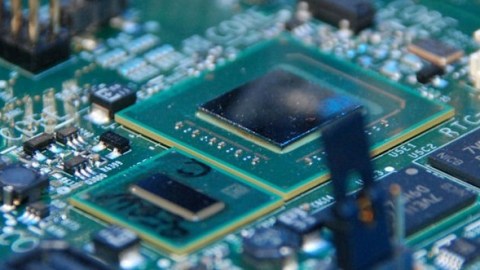Is Silicon Valley Ready for the Post-Silicon Era?

Is it ever possible that Silicon Valley could become another Detroit? To those who associate Silicon Valley with innovative startups, an endless supply of capital and the world’s most brilliant thinkers, this scenario might seems preposterous at best, and downright un-American at worst. However, keep in mind that at one time, it seemed almost inconceivable that Detroit — once the leading automotive center in the world and one of America’s most prosperous cities — could ever lose its place on the world stage. But what if Silicon Valley is not ready for the Post-Silicon Era?
To begin pondering the Post-Silicon Era and the future of Silicon Valley, we need to start by thinking about silicon. The amazing economic engine of Silicon Valley is really based on a single fundamental underpinning, Moore’s Law, which states that computing capabilities will double approximately every 18-24 months. In reality, these extraordinary performance enhancements mean that electronic devices keep getting smaller and smaller, while at the same time, becoming more and more powerful. Think digital cameras, laptop computers, and mobile phones. Yet, at some point down the road, Moore’s Law can not hold – it must reach some sort of asymptotic law of diminishing returns. You simply won’t be able to fit a greater number of transistors on a microchip. After all, as even Gordon Moore noted himself, Moore’s Law was really just an “observation” and not an immutable “law” of physics.
Moore’s Law puts the Silicon in Silicon Valley. Take away Moore’s Law and what do you get? At best, you get tiny, incremental improvements in digital devices, rather than major, breakthrough changes. It’s almost impossible to imagine a future without the miniaturization of computers, since innovation in Silicon Valley seems almost a given. But what happens when we reach a Silicon Plateau — when the innovators in California can no longer crank out new gadgets and devices that are smaller and better than anything the rest of the world can imagine or design?
In his new book The Physics of the Future, fellow Big Think contributor Michio Kaku tackles this fundamental question:
“Around 2020 or soon afterward, Moore’s law will gradually cease to hold true and Silicon Valley may slowly turn into a rust belt unless a replacement technology is found. Transistors will be so small that quantum theory or atomic physics takes over and electrons leak out of the wires. For example, the thinnest layer inside your computer will be about five atoms across. At that point, according to the laws of physics, the quantum theory takes over. The Heisenberg uncertainty principle states that you cannot know both the position and velocity of any particle. This may sound counterintuitive, but at the atomic level you simply cannot know where the electron is, so it can never be confined precisely in an ultrathin wire or layer and it necessarily leaks out, causing the circuit to short-circuit. According to the laws of physics, eventually the Age of Silicon will come to a close, as we enter the Post-Silicon Era.”
That’s the answer to the question, then – Silicon Valley can only become another Detroit if it does not prepare itself for the end of Moore’s Law and embrace new technologies — such as nanotechnology. At some point, even The Physics of the Future say that it’s impossible to squeeze ever more transistors onto ever-smaller chips using current methods.
Certainly, the haunting images coming out of Detroit these days should be a warning to the startup leaders in Silicon Valley — the Ruins of Detroit images from Yves Marchand and Romain Meffre, especially so. According to the U.S. Census, Detroit is now the 19th largest metropolis in the nation, with its population at the lowest point it’s been in more than 100 years. In the past decade, Detroit lost more than 25% of its population.
That’s a staggering reminder that the rest of the world never stands by, and that American innovators do not have a lock on global innovation. (In fact, the Silicon Plateau is actually a nickname used to describe India’s Silicon Valley) It’s hard to believe that one day we’ll be looking at haunting photographs of a rusted hollowed out Googleplex – complete with abandoned foosball machines and dusty beanbag couches – as a cautionary tale of what went wrong. Surely the innovators in Silicon Valley would never let that happen, would they?





